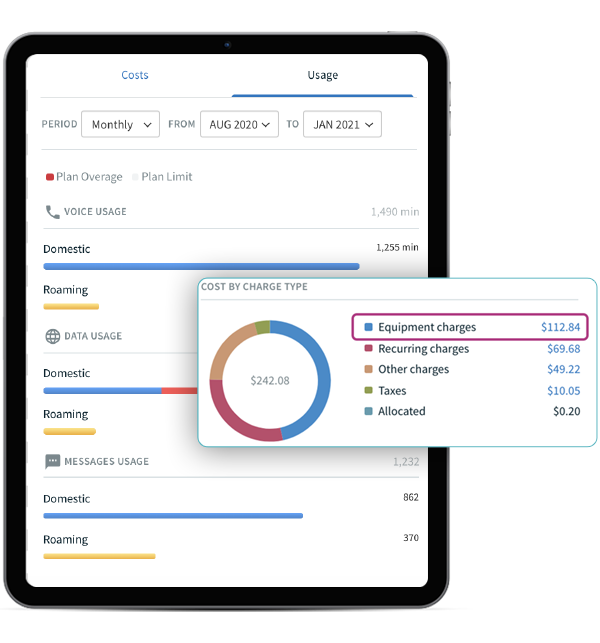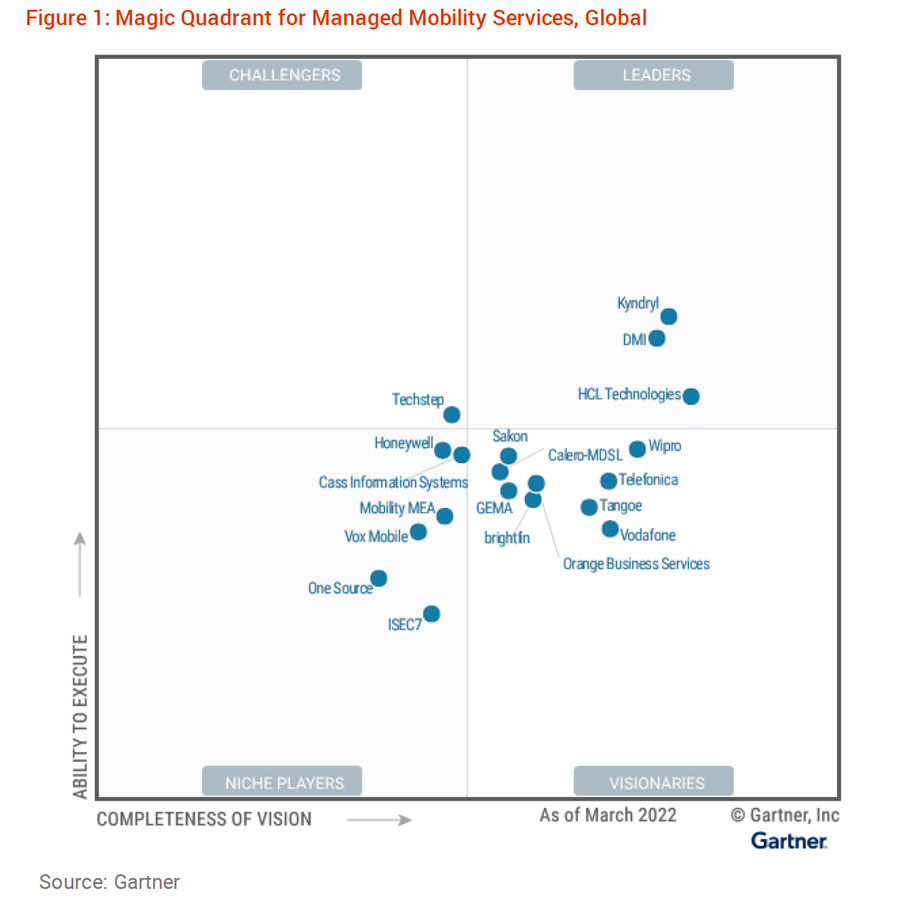Introduction to Managed Mobility Services (MMS)
Organizations have embraced smartphones, tablets, and similar devices to enable workers with unprecedented flexibility, knowledge access, and productivity capabilities. However, this tremendous investment in mobile technology can also create new issues for IT departments – from security concerns to user acceptance, satisfaction, and support.
Enter Managed Mobility Services (MMS), which work as an extension of organizations’ already existing IT departments to ensure that all enterprise-related mobile devices remain appropriately managed and secure.
In addition to its ability to provide broad enterprise mobility support, MMS is able to offer specialized services such as remote device monitoring, staging and kiting devices, or canceling unused lines to save budget – allowing internal IT departments to focus on their core responsibilities while still maintaining complete oversight of their mobility initiatives.
Get your complimentary 2022 Gartner Magic Quadrant for Managed Mobility Services, Global

The Essential Benefits of MMS
Managed Mobility Services is an increasingly vital resource in the enterprise. As the mobile landscape continues to evolve and Bring Your Own Device (BYOD) becomes more common, companies are looking for ways to manage how they enable workers with devices while keeping costs low and managing against risks.
A Managed Mobility Services provider offers value-added services, including carrier relations, management of mobile infrastructure, monitoring/optimization of costs, visibility reporting for tracking available devices, and helping IT departments understand device usage. Additionally, many organizations layer in Unified Endpoint Management tools to ensure network security.
Managed Mobility Services address a wide range of mobility-related needs by delivering these five key benefits:
- Keep your employees productive by providing secure access to corporate resources from any location.
- Implement a UEM to reduce the risk of data loss by protecting against malware, viruses, ransomware, and other threats
- Provide visibility into your network for easier troubleshooting.
- Simplify management tasks with automated patching and upgrades.
- Improve disaster recovery capabilities.
MMSs typically provide a level of support for a company’s mobile environment that cannot be achieved with in-house resources.
A growing trend is the assumption of total responsibility for all phases, from procurement to shipping, and at the same time providing mobile helpdesk functions that are performed by MSSP staff.

What to Look for in an MMS
The first step in evaluating MMS providers is to make sure that the provider understands your business. They should be able to explain how their solutions will help you lower costs, increase productivity or improve customer satisfaction.
Once you have narrowed down the field to a few candidates, it’s time to dig deeper into each provider’s capabilities and expertise.
When considering an MMS, it’s integral to take into consideration the following factors:
- Device procurement and logistics: How does the MMS purchase, provision and activate network services, applications and devices, in addition to what is delivered through an expense management or UEM platform. Also, consider the lifecycle and support including staging and kitting, depot repair, advanced replacement, recycling, and device cascading.
- Managed UEM: How does your organization plan to utilize UEM licensing and operating tools that provide agent and agentless management of computers and mobile devices through a single console.
- Cost optimization: This is where your organization will see a reduction in IT spending across the following elements: sourcing management, ordering and provisioning management, inventory management, invoice and contract management, usage management, and dispute management and reporting.
- Professional services: consider your needs to manage capabilities cohesively and effectively, including governance across the included set of third-party providers, account management, support, and SLAs.

Get your complimentary 2022 Gartner Magic Quadrant for Managed Mobility Services, Global
The first step in evaluating MMS providers is to make sure that the provider understands your business. They should be able to explain how their solutions will help you lower costs, increase productivity or improve customer satisfaction.
Today, MMS remains the method by which most enterprises are trying to manage their ever-expanding mobile ecosystems. MMS will be labor-intensive and complex for companies that don’t have the expertise in-house to architect a solution for themselves. But once businesses have a one-stop-shop, where they can outsource their entire MMS needs and have it run by experts, then mobile device management can reach the critical point it needs to be today. This will help employees be more productive and will strengthen existing business strategies.





